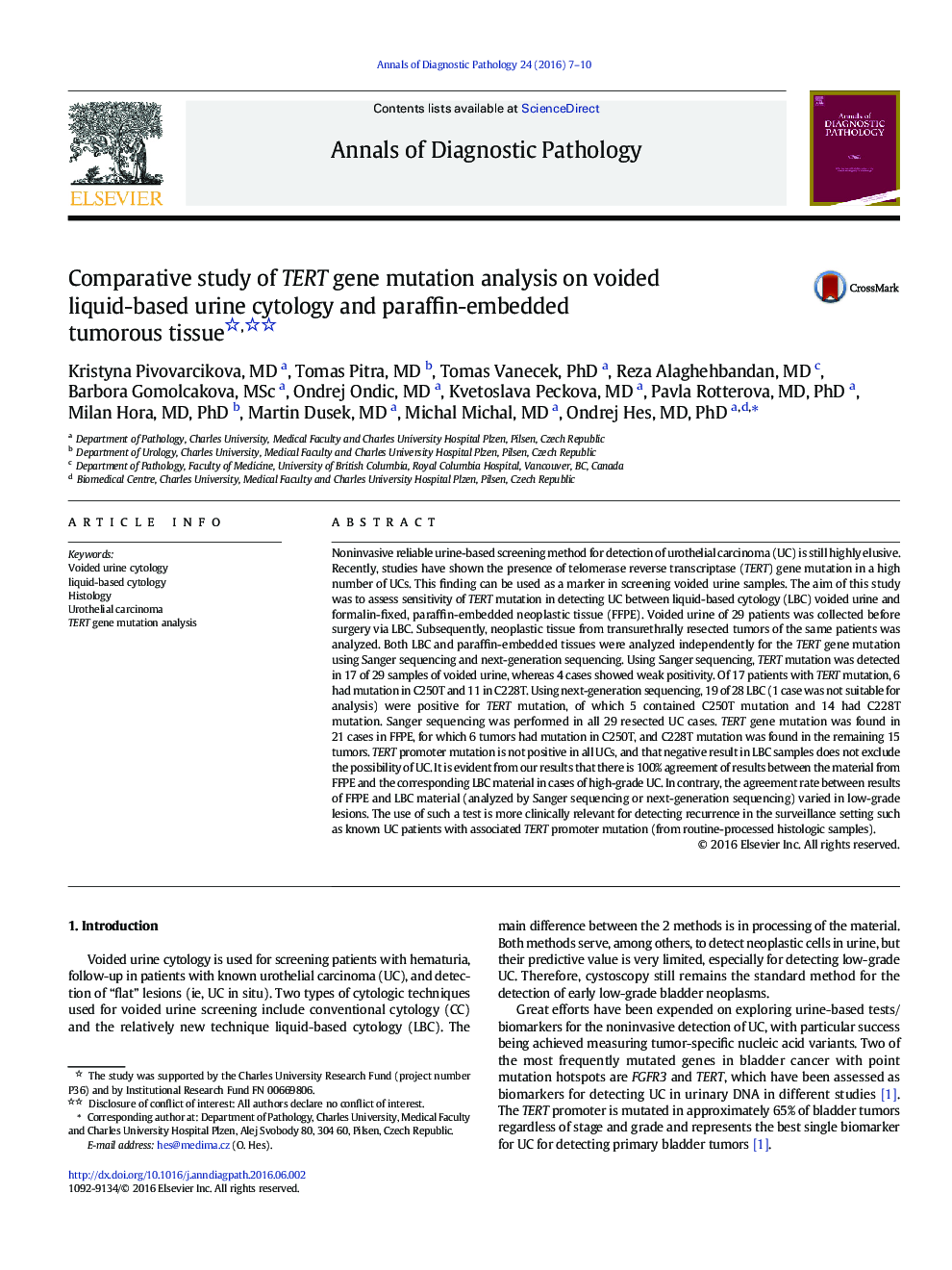| Article ID | Journal | Published Year | Pages | File Type |
|---|---|---|---|---|
| 4129681 | Annals of Diagnostic Pathology | 2016 | 4 Pages |
Noninvasive reliable urine-based screening method for detection of urothelial carcinoma (UC) is still highly elusive. Recently, studies have shown the presence of telomerase reverse transcriptase (TERT) gene mutation in a high number of UCs. This finding can be used as a marker in screening voided urine samples. The aim of this study was to assess sensitivity of TERT mutation in detecting UC between liquid-based cytology (LBC) voided urine and formalin-fixed, paraffin-embedded neoplastic tissue (FFPE). Voided urine of 29 patients was collected before surgery via LBC. Subsequently, neoplastic tissue from transurethrally resected tumors of the same patients was analyzed. Both LBC and paraffin-embedded tissues were analyzed independently for the TERT gene mutation using Sanger sequencing and next-generation sequencing. Using Sanger sequencing, TERT mutation was detected in 17 of 29 samples of voided urine, whereas 4 cases showed weak positivity. Of 17 patients with TERT mutation, 6 had mutation in C250T and 11 in C228T. Using next-generation sequencing, 19 of 28 LBC (1 case was not suitable for analysis) were positive for TERT mutation, of which 5 contained C250T mutation and 14 had C228T mutation. Sanger sequencing was performed in all 29 resected UC cases. TERT gene mutation was found in 21 cases in FFPE, for which 6 tumors had mutation in C250T, and C228T mutation was found in the remaining 15 tumors. TERT promoter mutation is not positive in all UCs, and that negative result in LBC samples does not exclude the possibility of UC. It is evident from our results that there is 100% agreement of results between the material from FFPE and the corresponding LBC material in cases of high-grade UC. In contrary, the agreement rate between results of FFPE and LBC material (analyzed by Sanger sequencing or next-generation sequencing) varied in low-grade lesions. The use of such a test is more clinically relevant for detecting recurrence in the surveillance setting such as known UC patients with associated TERT promoter mutation (from routine-processed histologic samples).
